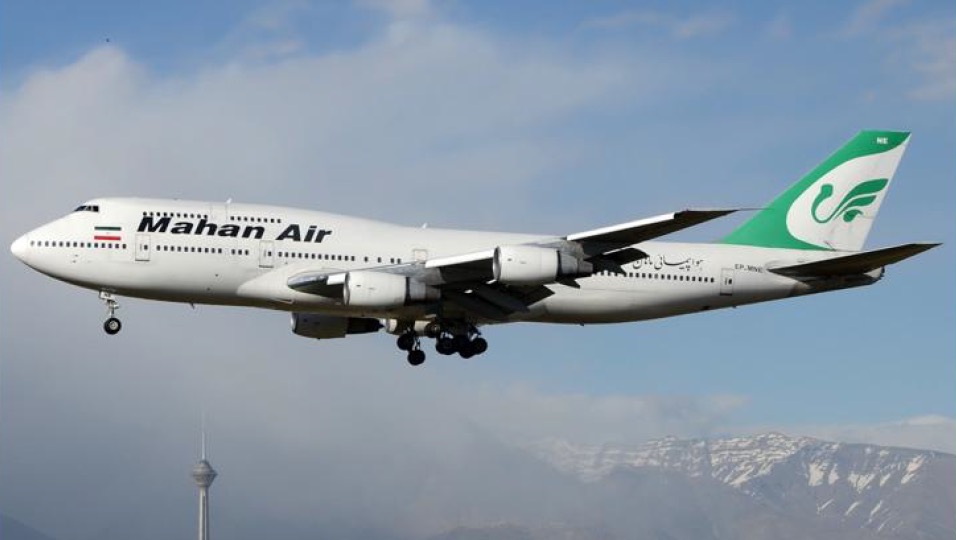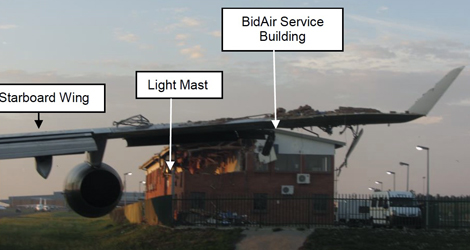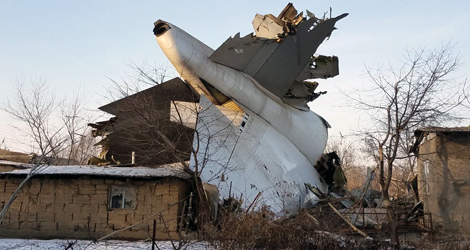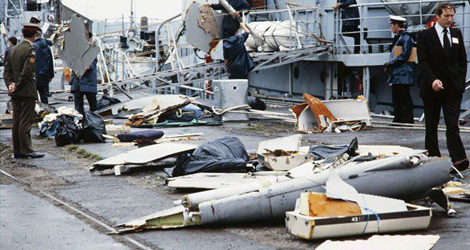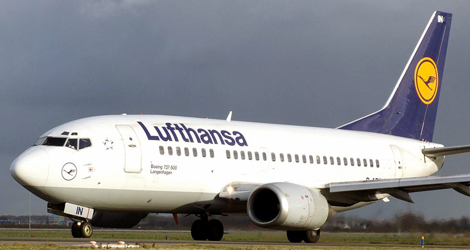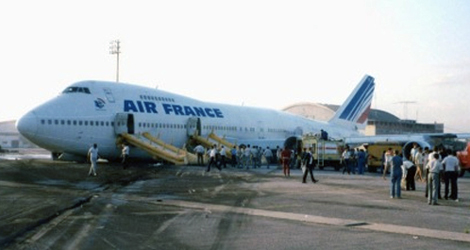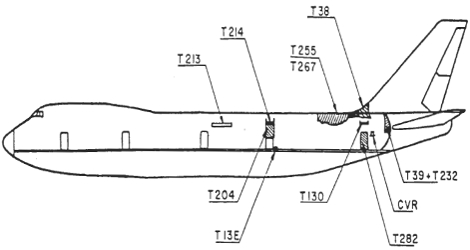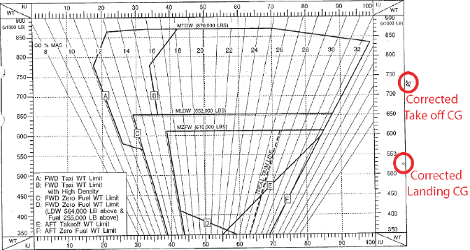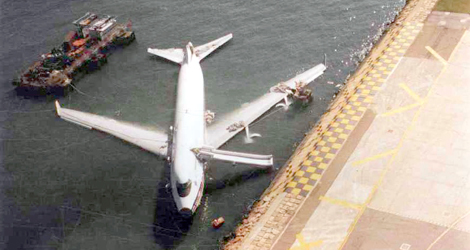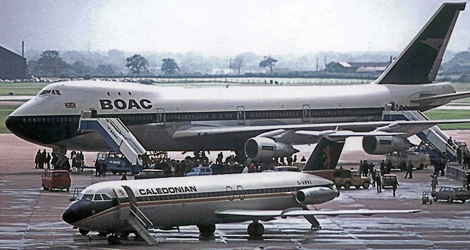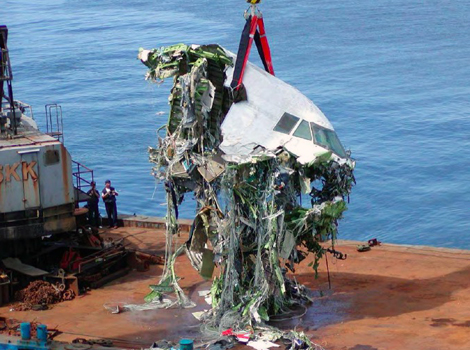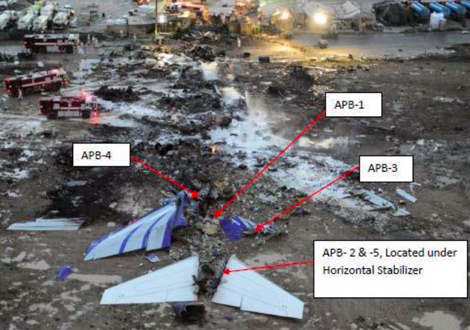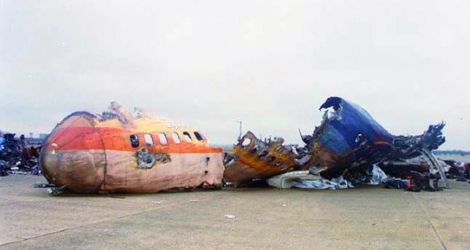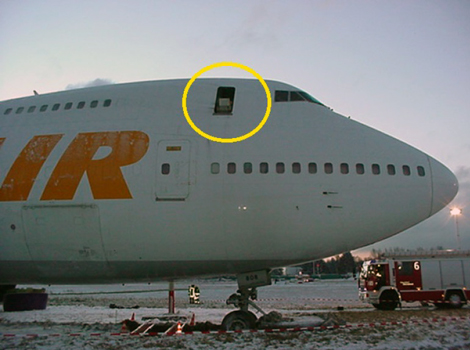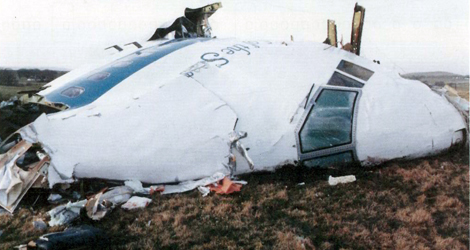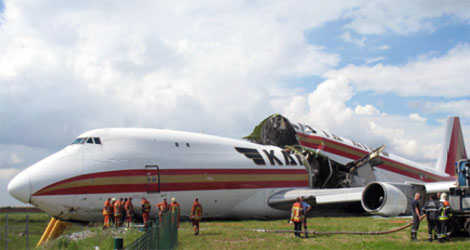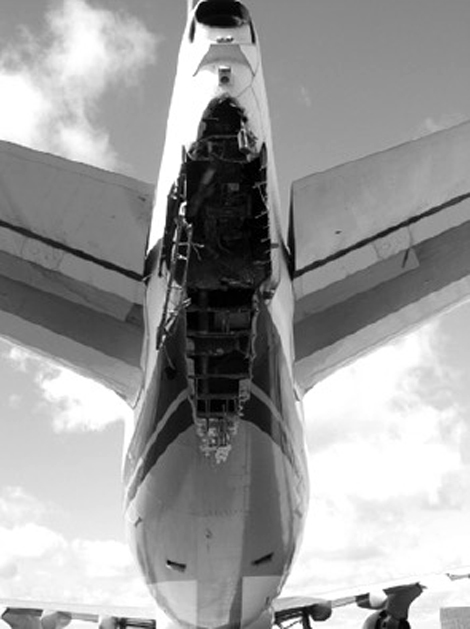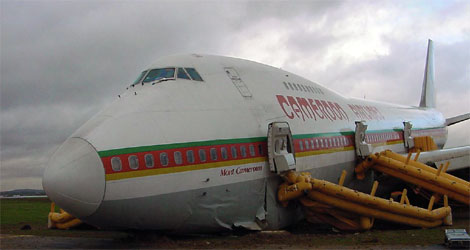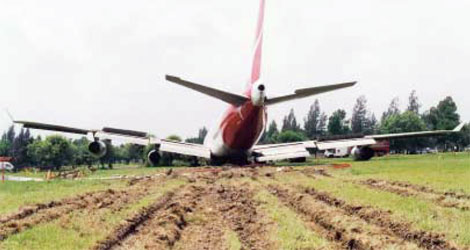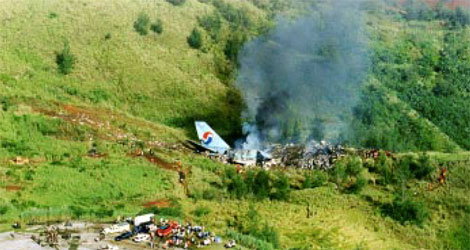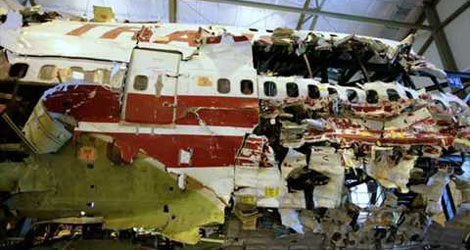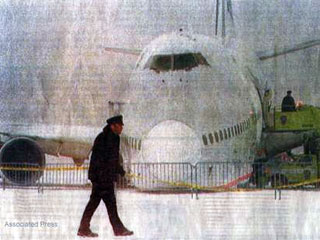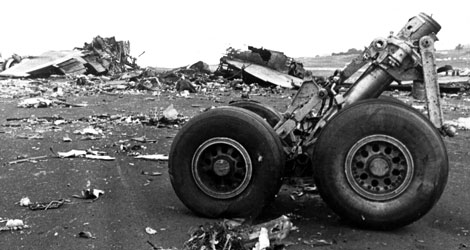On 15 Oct 2015, a Boeing 747-300, registered EP-MNE was operating Mahan Air flight IRM1095 from Mehrabad International Airport to Bandar Abbas airport within IR of IRAN territory. Mahan Air flight IRM1095 was carrying 19 flight crew and 422 passengers. The aircraft...
The Boeing 747, also nicknamed the “Queen of the Skies,” revolutionized air travel upon its arrival in the late 1960s. Here’s why it became such a legend:
Double Decker Domination: The most distinctive feature is its upper hump, creating a double-deck layout. This innovation significantly increased passenger capacity, making long-haul flights more economical for airlines and opening up new travel possibilities.
Jumbo Jet Power: Packed with powerful turbofan engines, the 747 offered impressive range and payload capabilities. It could carry hundreds of passengers and vast amounts of cargo across continents, making it ideal for establishing new intercontinental routes and supporting the booming cargo industry.
Reliability and Refinement: The 747 was known for its robust airframe and dependable performance. Pilots praised its handling characteristics, and airlines valued its efficiency and long service life. Over the years, various models were introduced, offering extended range, increased fuel efficiency, and improved passenger amenities.
Legacy and Evolution: While passenger versions are slowly being phased out in favor of more efficient twin-engine jets, the 747 remains a workhorse in cargo operations. Its spacious hold and long-range capabilities make it ideal for transporting large freight across vast distances.
A Cultural Icon: Beyond its technical prowess, the 747 transcended the aviation world. It became a symbol of globalization and technological advancement, featured in countless movies, and captured the imagination of aviation enthusiasts worldwide. The Boeing 747’s impact on air travel is undeniable, leaving a lasting legacy as the “Queen of the Skies.”
Korean Air – Boeing B747-400 (HL7473) flight KAL2711
The history of the Korean Air flight KAL2711 is summarized as below, based on the data from onboard digital flight data recorder (DFDR), the air traffic control (ATC) communication records and the statements of the pilot in command (PIC), the first officer (FO), two...
Cargo Airline – Boeing B747-271C (4X-ICM)
The serious accident of Cargo Airline 4X-ICM happened on October 01st 2003. The Boeing B747-271C cargo airplane registered 4X-ICM was operated by Cargo Airline Ltd. After an uneventful flight from Tel Aviv and a normal ILS approach on runway 05R of Liege, the Cargo...
Japan Airlines – Boeing B747-300 (JA8178) flight JL726
On September 5, 2000, a Boeing B747-300 of Japan Airlines (JAL) registration JA8178 was operating on a scheduled international passenger flight, as Japan Airlines flight JL726. The aircraft, which departed from Soekarno-Hatta International Airport, Jakarta,...
British Airways – Boeing B747-400 (G-BNLL) flight BA034
The British Airways flight BA034 , a Boeing B747-400 with registration G-BNLL , was going to embark on a commercial international air transportation long haul flight from FAOR to EGLL. ATC gave British Airways flight BA034 instructions to push back, start and face...
ACT Airlines – Boeing B747-412F (TC-MCL) flight TK6491
On January 1st 2017 the crew of a cargo Boeing 747-412F a/c registration TC-MCL operated by ACT Airlines including Captain, FO, loadmaster and a/c...
Air India – Boeing B747-237B (VT-EFO) flight AI182
On the morning of 23rd June 1985 , Air India flight AI182 , a Boeing 747 aircraft VT-EFO (Kanishka) was on a scheduled passenger flight from Montreal and was proceeding to London enroute to Delhi and Bombay. It was being monitored at Shannon on the Radar Scope. At...
Lufthansa – Boeing B737-300 (D-ABEA) flight LH4019
Lufthansa flight LH4019 was a flight from Turin, Italy, to Frankfurt/Main, Germany operated with a Boeing 737-300 , registration marks D-ABEA. Five crew members and ninety passengers were on board. At 0735 hrs1 during approach to runway 25L in Frankfurt , Lufthansa...
Air France – Boeing B747-228B (F-GCBC) flight AF091
On December 1st , 1985, at 21:30 UTC, Air France Boeing B-747-228-B-Combi, F-GCBC took off from Charles de Gaulle Airport - Paris, as flight AF091, with stops in Rio de Janeiro and Buenos Aires. The Air France Flight AF091 crew, composed of a Captain, two copilots and...
Japan Airlines – Boeing B747 SR-100 (JA8119) flight JAL123
Japan Airlines Flight JAL123 , during a flight from Tokyo to Osaka scheduled as flight JAL123 on August 12, 1985, experienced an emergency at approximately 18:25 hours when approaching east coast of Southern Izu Peninsula, and after a continued flight of about 30...
QANTAS – BOEING B747-438 (VH-OJK) flight QF30
At 0922 local time (0122 UTC ) on 25 July 2008, a Boeing 747-438 QANTAS flight QF30, departed Hong Kong International Airport on a scheduled passenger transport service to Melbourne, Australia. On board the aircraft (operating as flight number QF30) were 350...
SOUTH AFRICAN AIRWAYS – BOEING B747-244B (ZS-SAS) flight SA295
On November 27th 1987 at 14:23, SOUTH AFRICAN AIRWAYS flight SA295, a Boeing 747-244B Combi of South African Airways, departed from Taipei's Chiang Kai Shek Airport for Mauritius' Plaisance Airport with 159 persons on board. In the main deck cargo hold 6 pallets of...
KOREAN AIR – BOEING B747-400F (HL7467) flight KAL520
On 21 September 2004, at time 1302, a B747-400F operated by Korean Air was taking off from Oslo Airport Gardermoen for a KOREAN AIR flight KAL520 to Incheon International Airport, Seoul, Republic of Korea. During take-off run, the aircraft started to autorotate at...
China Airlines – Boeing B747-409B (B-165) flight CAL605
China Airlines flight CAL604 was a flight from Taiwan to Hong Kong international airport operated with a Boeing B747-409B (B-165) operated on 04th November 1993. On the day of the China Airlines flight CAL605 accident, Hong Kong International Airport (HKIA) was...
British Airways – Boeing B747-136 (G-AWNC) flight BA888
The aircraft was operating as British Airways flight BA888 (British Airways Overseas Division - BAOD) scheduled passenger service BA888 from London to Melbourne via Bahrain, Bangkok and Kuala Lumpur. The flight crew, consisting of the commander, co-pilot and flight...
China Airlines – Boeing B747-200 (B-18255) flight CI611
On May 25, 2002, China Airlines flight CI611 , a Boeing 747-200, Republic of China (ROC) registration B-18255, was a regularly scheduled flight from Chiang Kai Shek International Airport (CKS), Taoyuan, Taiwan, ROC to Chek Lap Kok International Airport, Hong Kong....
National Air Cargo – Boeing B747-400BCF (N-949CA) flight ISAF95AQ
On April 29, 2013, about 1527 local time, a Boeing 747-400BCF, N-949CA, operated by National Air Cargo, Inc., dba National Airlines flight ISAF95AQ , crashed shortly after takeoff from Bagram Air Base, Bagram, Afghanistan. All seven crewmembers of National Airlines...
Singapore Airlines – Boeing – B747-400 (9V-SPK ) flight SQ006
On October 31, 2000, at 2317 Taipei local time3 (1517 UTC), Singapore Airlines flight SQ006, a Boeing 747-400 aircraft, bearing Singapore registration 9V-SPK, struck barriers and construction equipment during takeoff on Runway 05R, a portion of which had been closed...
Atlas Air – Boeing – B747-212B (N-808MC) flight 5Y8995
On 23 January 2005 the cargo aircraft Boeing 747-212B took off from Dubai Airport at 2234 UTC for a flight to Düsseldorf. The Pilot in Command (PIC), the co-pilot and a flight engineer were aboard. After more than six hours of flight time the aircraft was the first...
Pan Am – Boeing – B747-121 (N-739PA) flight PA103
Boeing 747 , N739PA, arrived at London Heathrow Airport from San Francisco and parked on stand Kilo 14, to the south-east of Terminal 3. Many of the passengers for this aircraft had arrived at Heathrow from Frankfurt, West Germany on a Boeing 727, which was positioned...
UPS – Boeing – B747-44AF (N-571UP) flight UPS6
UPS flight UPS6 , a Boeing 747-44AF departed Dubai International Airport [DXB] on September 03rd 2010 on a scheduled international cargo flight [SCAT-IC] to Cologne [CGN], Germany. Twenty two minutes into the flight, at approximately 32,000 feet, the crew advised...
Kalitta Air – Boeing – B747-209F (N-704CK) flight K4706
On May 25, 2008, at 11:31(UTC), a Kalitta Air B747-200 overran runway 20 of the Brussels Airport, Belgium after a Rejected Take-Off. The aircraft came to a stop 300m after the end of runway 20, above the railroad embankment. The aircraft was severely damaged; it broke...
Singapore Airlines – Boeing – B747-412 (9V-SMT) flight SQ286
Singapore Airlines flight SQ286 accident took place on takeoff from Auckland airport on March 12, 2003. [...] the captain taxied 9V-SMT to the end of runway 23 Left to use the full runway length for take-off. The pilots had set the flap at Flap 20 and the STAB TRIM at...
Cameroon Airlines – Boeing – B747-200 (TJ-CAB) flight UYC070
On Sunday 5 November 2000, the Boeing 747-200 registered TJ-CAB operated by Cameroon Airlines was carrying out the scheduled service between Douala and Paris Charles de Gaulle under the operational call sign UYC070. Take-off from Douala took place at 14 h 25 about...
Qantas – Boeing – B747-438 (VH-OJH) flight QF1
On 23 September 1999, at about 2247 local time, a Qantas Boeing 747-438 aircraft registered VH-OJH (callsign Qantas One) overran runway 21 Left (21L) while landing at Bangkok International Airport, Thailand. The overrun occurred after the aircraft landed long and...
KOREAN AIR – BOEING – B747 (HL-7468) flight no. KL801
Korean Air flight KL801, a Boeing 747-3B5B (747-300), Korean registration HL7468, operated by Korean Air Company, Ltd., crashed at Nimitz Hill, Guam on August 6, 1997, about 0142:26 Guam local time. Flight 801 departed from Kimpo International Airport, Seoul, Korea,...
TWA Trans World Airlines – Boeing – B747-131 (N-93119) flight TWA800
TWA Trans World Airlines flight TWA800 , a Boeing 747-131, N93119, crashed in the Atlantic Ocean near East Moriches, New York on July 17, 1996, about 2031 eastern daylight time. TWA Trans World Airlines flight TWA800 was operating under the provisions of 14 Code of...
Tower Air – Boeing – B747-136 (N-605FF) flight TOW41
Tower Air flight TOW41 : on December 20, 1995, at 1136, Tower Air flight 41, a Boeing B-747, veered off the left side of runway 4L during an attempted takeoff at John F. Kennedy International Airport (JFK), Jamaica, New York. The flight was a regularly scheduled...
KLM vs PAN AM – Boeing B747 (PH-BUF N736PA) flights KL4805 – PAA1736 – The “Tenerife accident”.
KLM - PAN AM flights KL4805 - PAA1736 (the "Tenerife's accident") the highest death toll accident in aviation history. The KLM Boeing 747, registration PH-BUF, took off from Schipol Airport (Amsterdam) at 0900 hours on 27 March 1977, en route to Las Palmas de Gran...
Aviation accidents
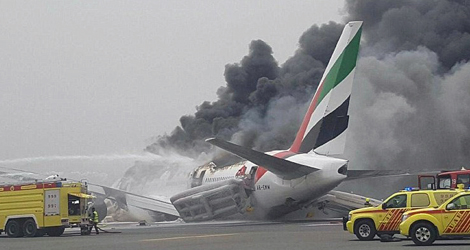 An aviation accident is an incident in which an aircraft is damaged or destroyed as a result of a collision, fire, structural failure, or other event. Aviation accidents can be caused by a variety of factors, including mechanical failure, pilot error, adverse weather conditions, and sabotage. Aviation accidents can result in fatalities, injuries, and damage to property.
An aviation accident is an incident in which an aircraft is damaged or destroyed as a result of a collision, fire, structural failure, or other event. Aviation accidents can be caused by a variety of factors, including mechanical failure, pilot error, adverse weather conditions, and sabotage. Aviation accidents can result in fatalities, injuries, and damage to property.
Aviation incidents
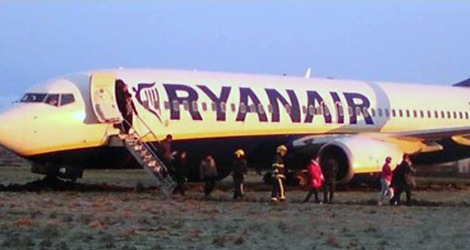 An aviation incident is an occurrence, other than an accident, that affects or could affect the safety of aircraft operations. Examples of aviation incidents include near collisions, runway incursions, and unruly passenger incidents.
An aviation incident is an occurrence, other than an accident, that affects or could affect the safety of aircraft operations. Examples of aviation incidents include near collisions, runway incursions, and unruly passenger incidents.
Aviation serious incidents
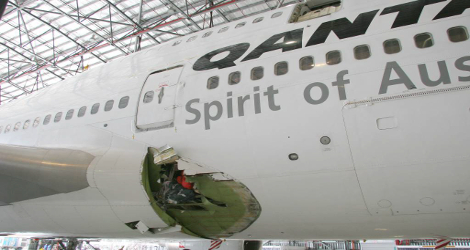
A serious incident in aviation refers to an event that could have resulted in an accident or that had the potential to cause serious injury or death. Some examples of serious incidents in aviation include engine failure, in-flight fires, and loss of control of the aircraft.

